ascavis
This project is solving the Neuromorphic Studies of Asteroid Imagery challenge. Description
Our solar system harbours millions of asteroids. On first sight an asteroid might just be a pile of rock in space. But if you look closer, there's much more to discover.
Why do asteroids matter?
Asteroids are the remnant debris of the planet formation processes in the early solar system. They have affected Earth's evolution in the past and will continue to do so in the future. Understanding their structure and composition gives us insights into the solar system's evolutionary history.
Many of them are very rich in minerals. A few companies have already begun to plan mining operations on asteroids in near-Earth orbit. Asteroid mining could have a profound economical impact on both space travel and life on Earth.
However, asteroids also pose a potential threat for humanity. There is a remote possibility that a large asteroid will impact Earth. Would an impact event happen in the present day, the consequence would likely be devastating. Thus monitoring asteroids is important to be prepared.
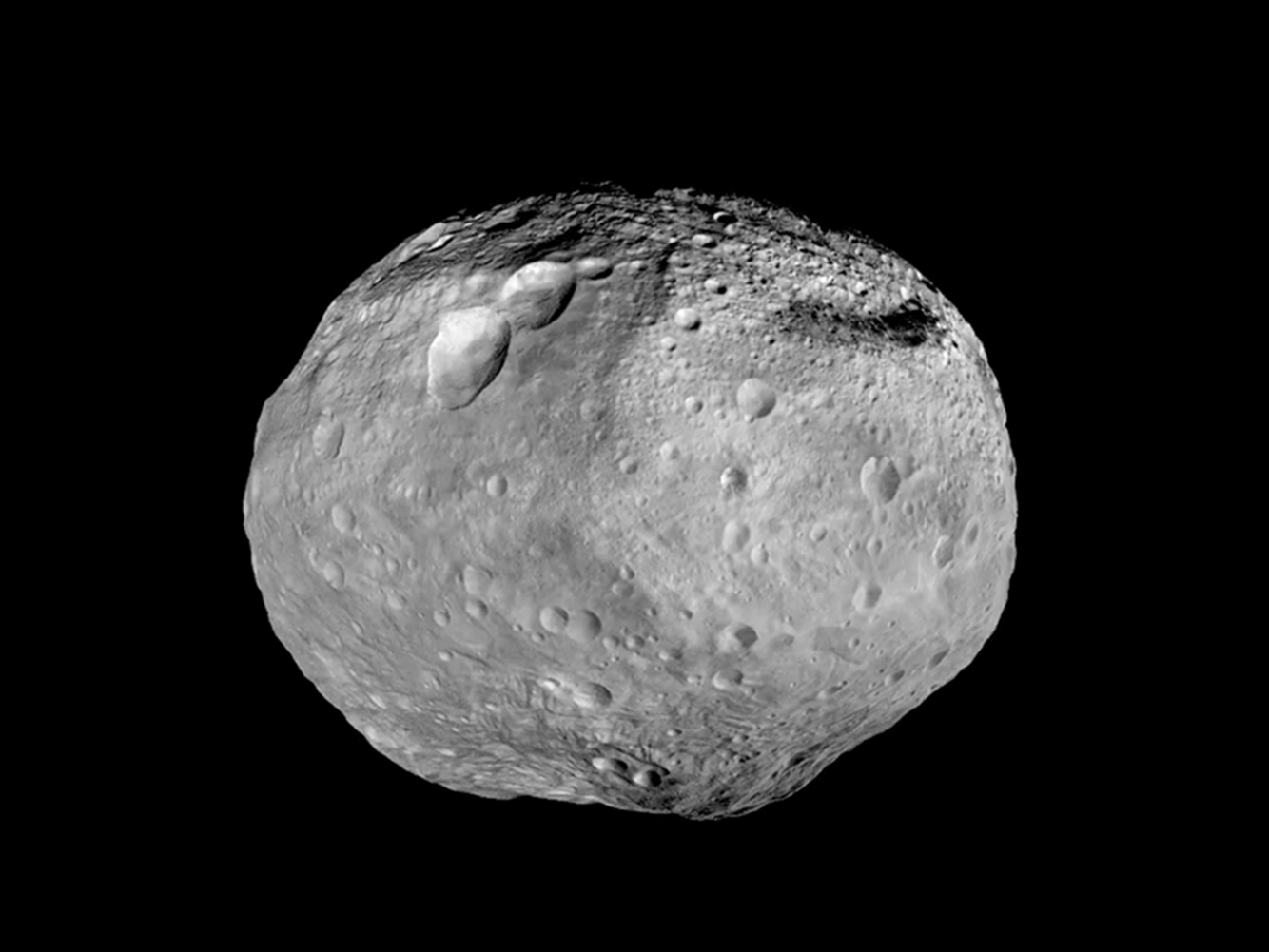
Lack of categorization
Yet only a fraction of asteroids have been successfully categorized. This is why our team tackled the challenge to study asteroids using machine learning techniques for the 2015 NASA SpaceAppsChallenge.
From space missions and ground-based observations, data about asteroids is already publicly available. Ascavis brings this data together and makes it accessible for everyone.
Data sources
The Minor Planet Center (MPC) hosts data about asteroids as a web service that give us a broad overview of what asteroids are known and which of their properties have been determined by scientific research.
Both professional and amateur astronomers contribute valuable observational data. For instance, researchers can upload raw light curve data to the MPC's Asteroid Light Curve Database.
We also tapped into the NASA Infrared Science Archive to obtain data from space telescopes such as Spitzer and WISE.
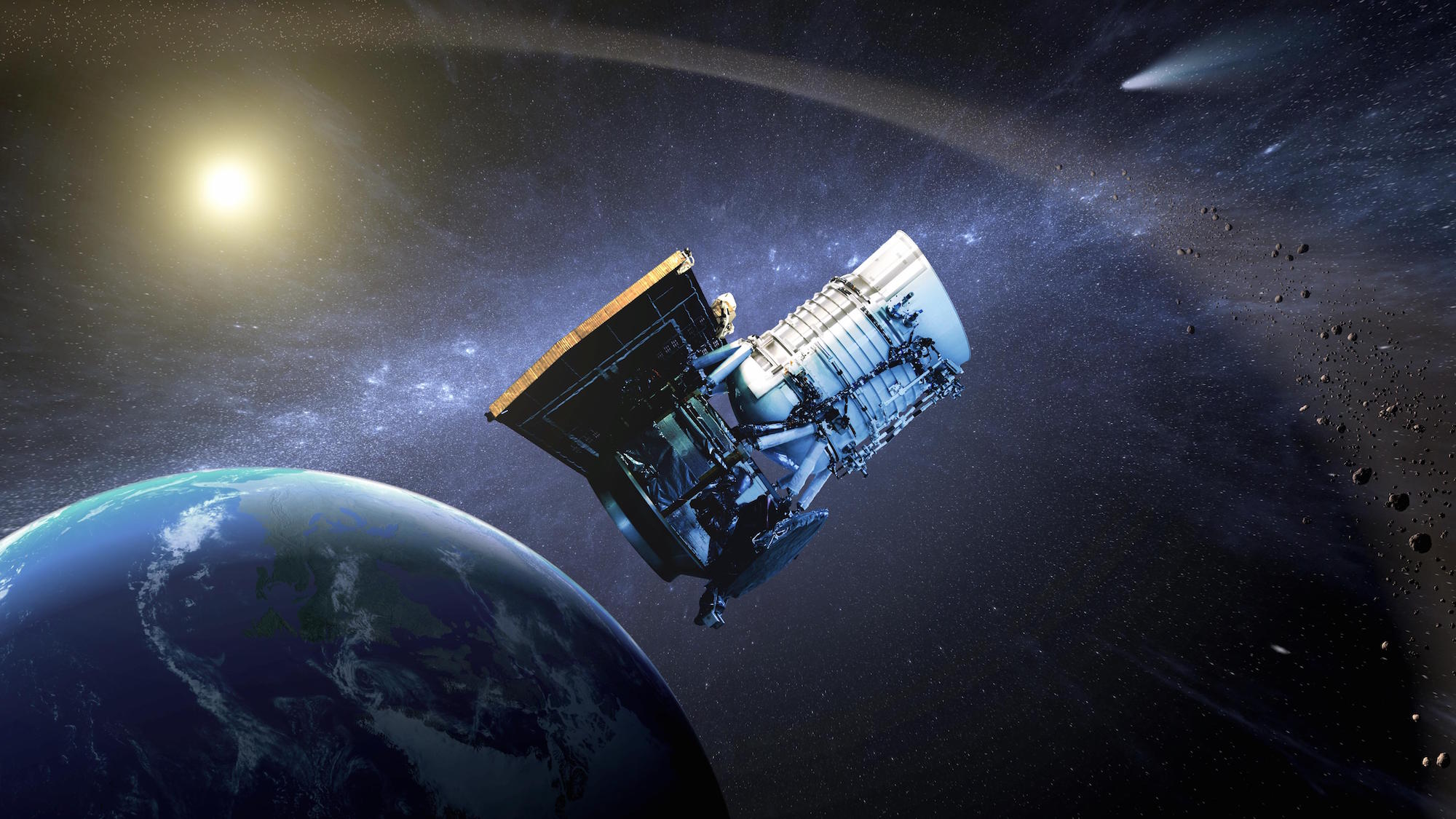
Machine learning
Our goal is to eventually use all the aforementioned data to learn more about those asteroids that have not been classified yet.
First of all, the data has to be normalized into a mathematical form that can be used as input for the machine learning algorithms. We aim to keep our system extendable, so that additional data sources can be plugged in as required. Think about future space missions, newly published data archives or simply other relevant data sources we have not yet integrated.
Visualization
In addition to the mere categorization of the data, we wanted to create an interface to make the heterogeneous data set accessible in a uniform way. The idea is on one hand to support scientists with our generated data and on the other to provide a tool for amateurs that opens up the field of asteroid science for them in an explorative way via visually browsing our web app.
To provide a responsive user interface orbit calculations are done within the browser itself and asteroid data is fetched from the backend in an asynchronous manner. This was achieved by using web technologies like HTML5, AJAX and WebGL so that the only requirement for the user is a modern web browser.
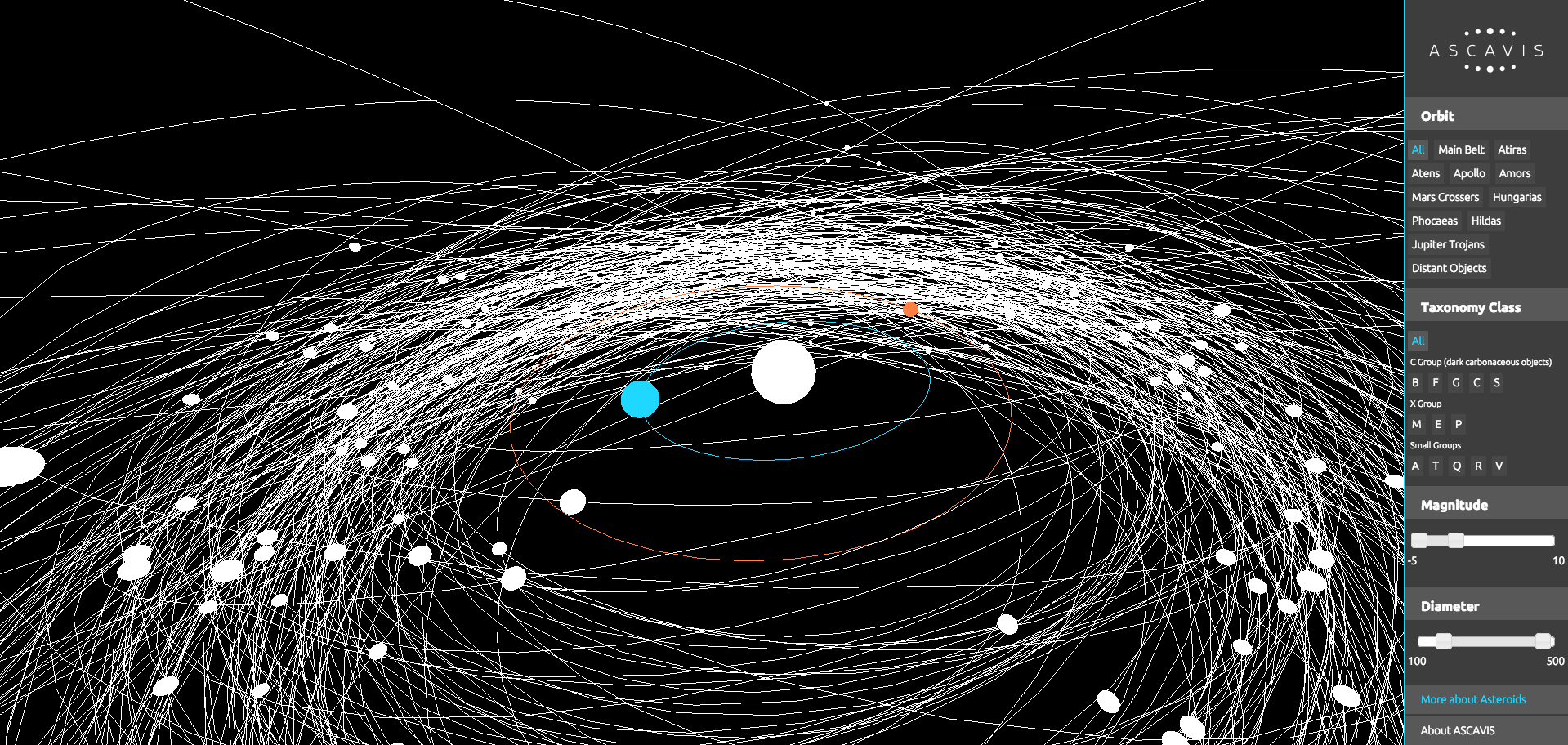
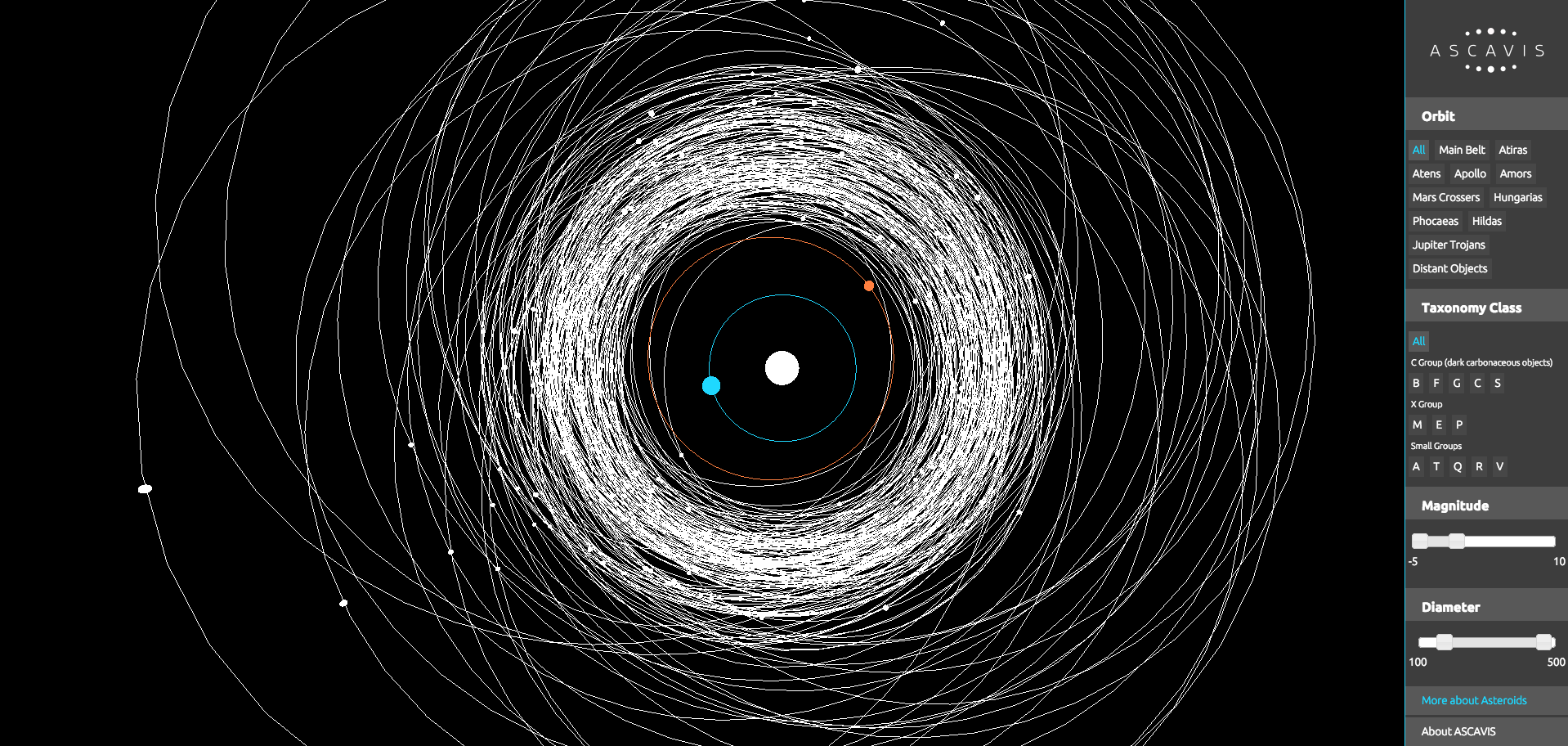
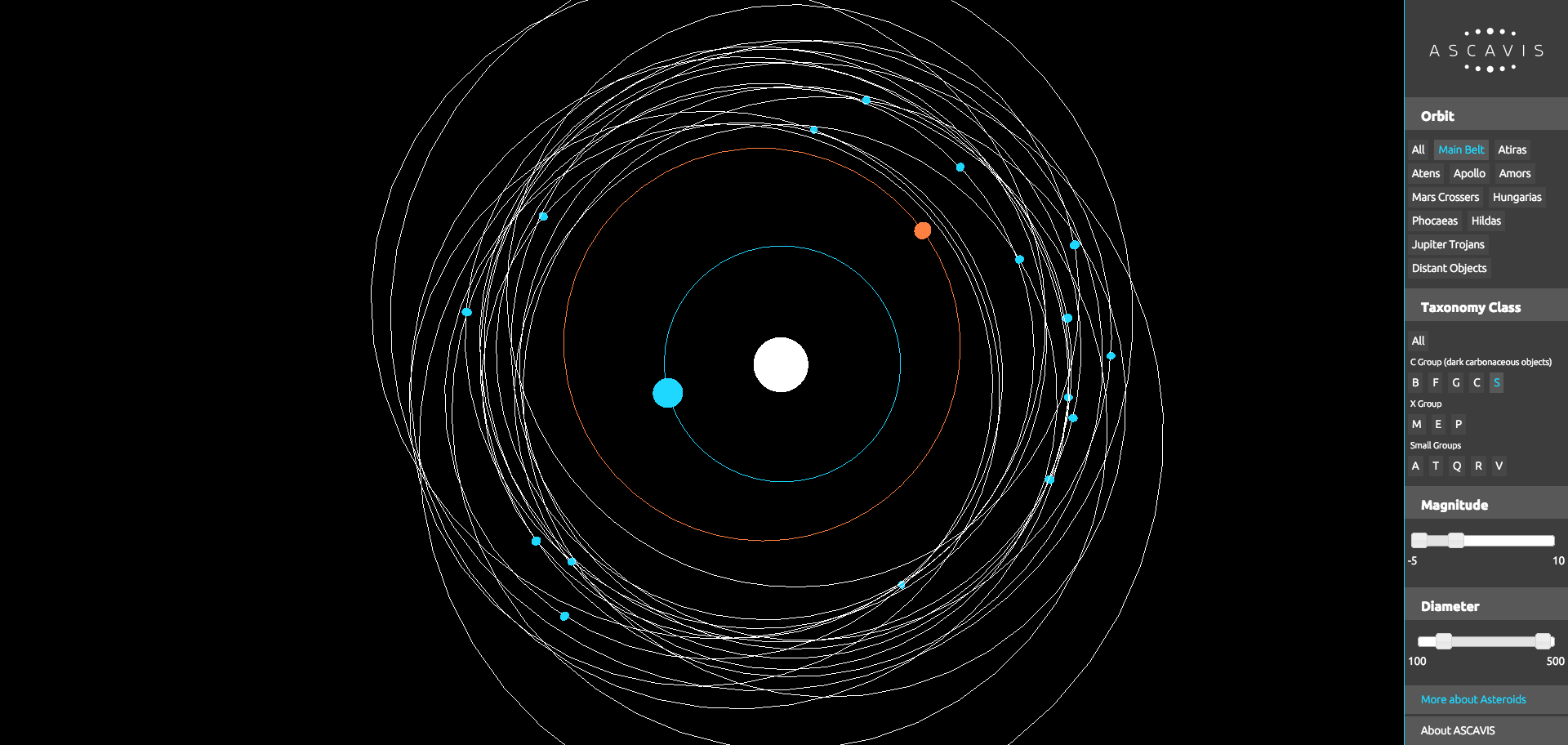
Conclusion
Ascavis may shed some light on the vast amounts of unclassified objects out there in interplanetary space and aid our understanding of planet formation, plans for asteroid mining or the identification of potentially hazardous asteroids.
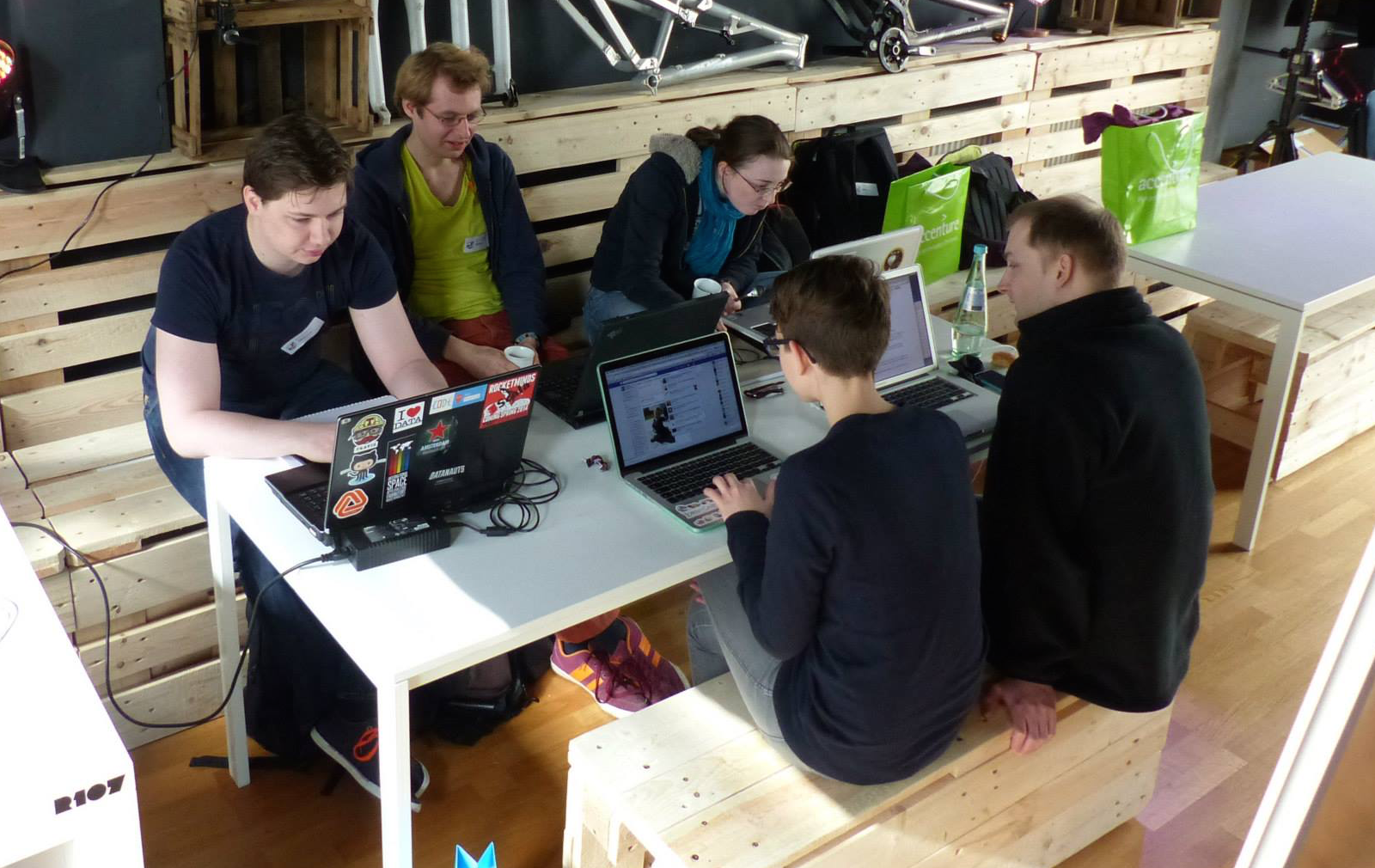
Project Information
License: GNU Affero General Public License 3.0 (AGPL-3.0)"
Source Code/Project URL: https://github.com/ascavis
Resources
ASCAVIS Visualisation Prototype - http://ascavis.org/
Minor Planet Center - http://www.minorplanetcenter.net/
NASA Dawn Mission - http://www.nasa.gov/mission_pages/dawn/main/index.html
WISE Telescope - http://www.nasa.gov/mission_pages/WISE/main/index.html
Spitzer Telescope - http://www.spitzer.caltech.edu/